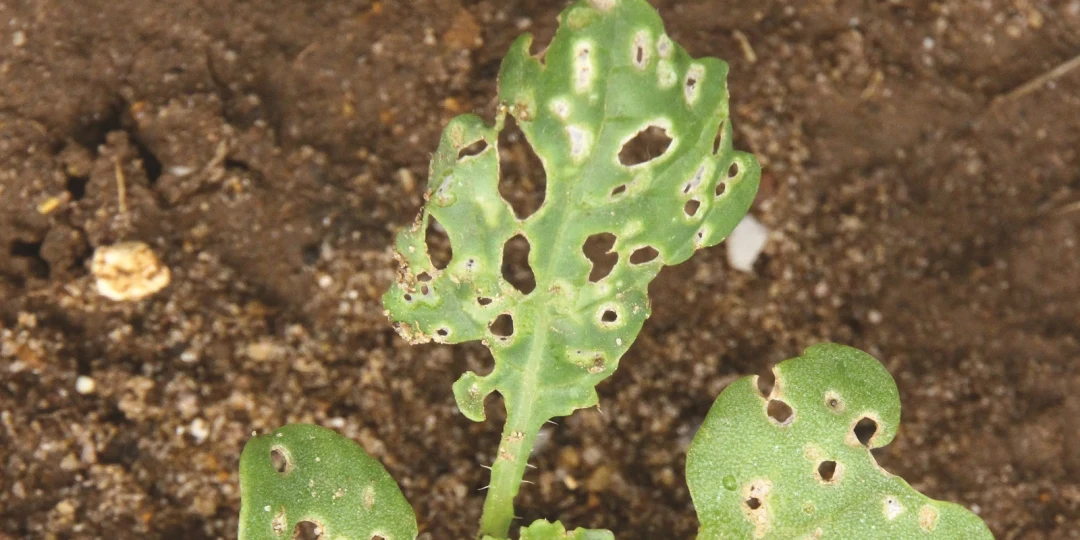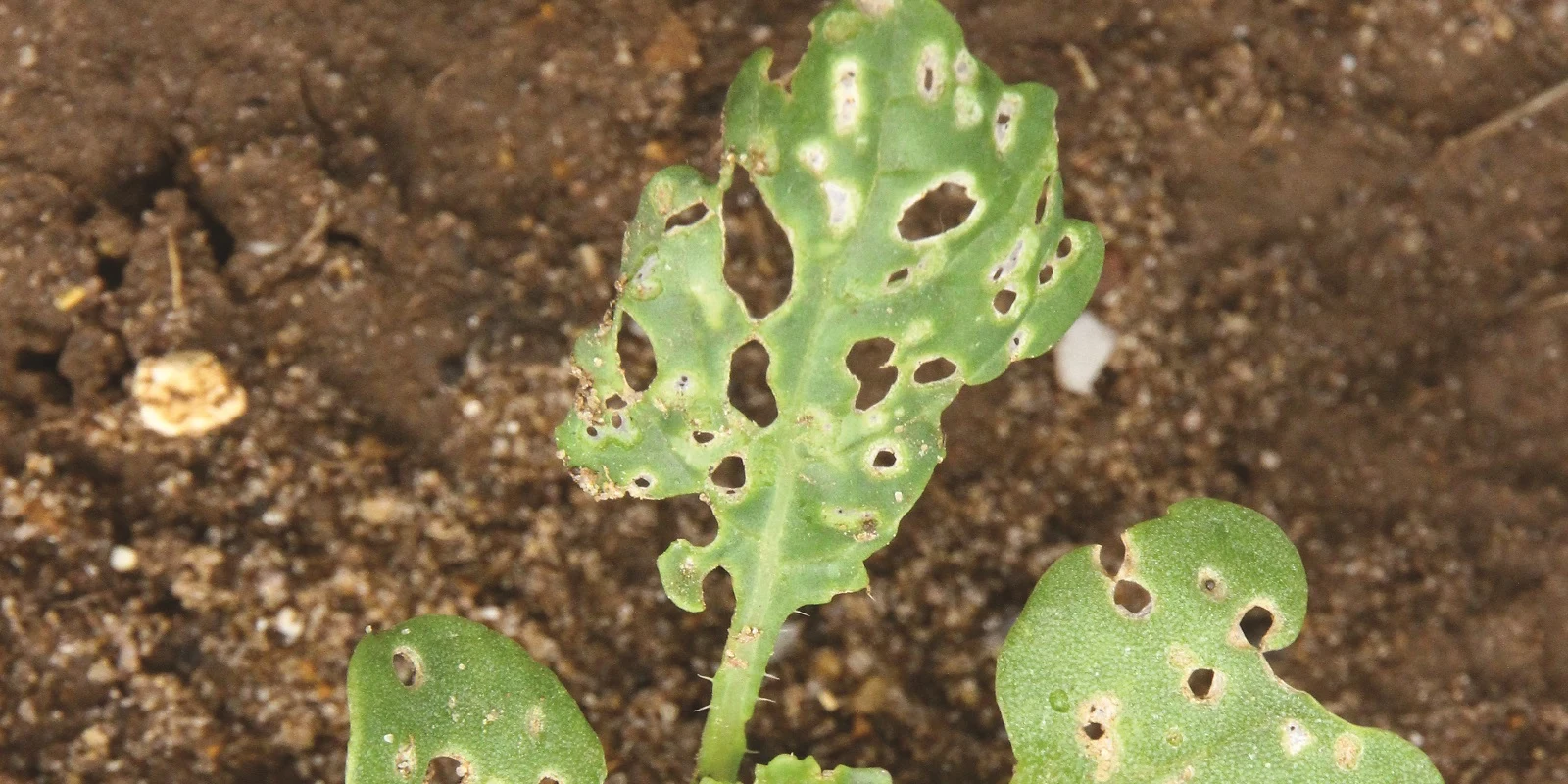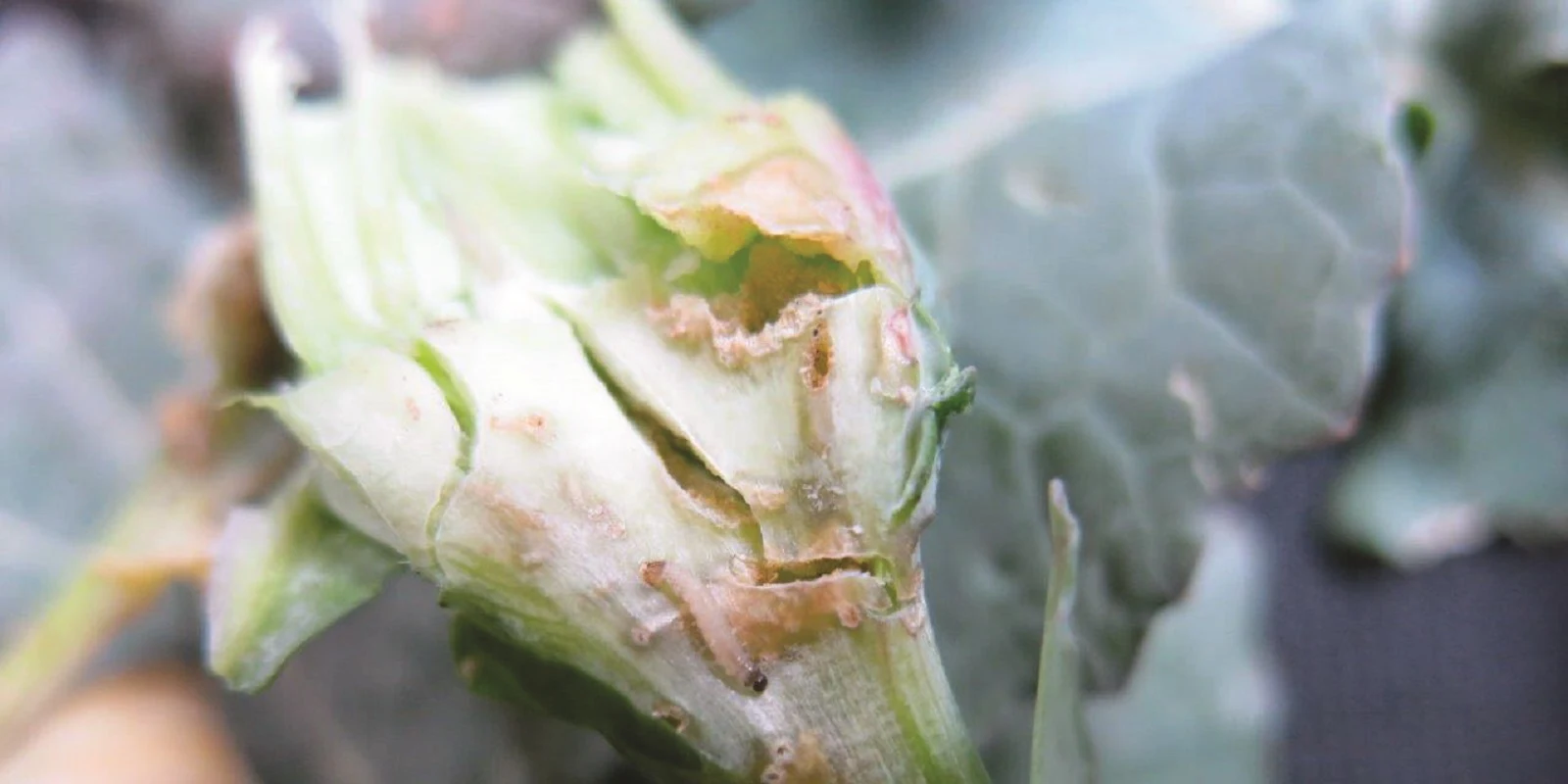
Cabbage Stem Flea Beetle
Psylliodes chrysocephala
Identification
The adult beetles are blue-black and 3-4.5 mm long. When disturbed the adults ‘jump’ using specialised hind legs. The creamy white larvae have numerous dark spots on the back and are up to 7 mm long. They have a dark brown head, 3 pairs of legs and a dark plate at the tail end.
Symptoms
The adults feed on both the cotyledons and the young developing leaves giving the distinctive ‘shot-holing’. Where crops are growing slowly severe damage and even plant loss can occur. Normally the damage caused by the larvae is economically more important. These can penetrate and mine into the older petioles and from here migrate into the stem of the plants and then on to damage the growing point.
Life-cycle
During the summer the adults become inactive and move to cool shaded places before returning to feed on brassica plants in the autumn. After a few weeks eggs are laid from which larvae emerge, these tunnel into the petioles of brassica plants throughout the winter into spring depending on weather conditions. From late autumn the larvae migrate to the soil to pupate. The adults hatch from these pupae in summer. Adults can also overwinter in hedges and other sheltered areas, emerging in late spring to feed on leaves and pods. There is 1 generation per year.
Large numbers of adults have been seen crawling across trailers of seed at harvest, but they do not cause any damage.
Importance
The cabbage stem flea beetle is widespread in the UK and northern Europe. The damage caused by adult CSFB feeding gives rise to the ‘shot-holing’ symptoms which affects the cotyledons and early leaves, resulting in stunting and poor plant vigour. If severe, the damage can kill the seedlings even before they emerge. Pyrethroid sprays should be applied where necessary. If adult CSFB attack continue into the autumn then crops should be monitored for larval presence and where necessary a further pyrethroid insecticide should be applied.
Threshold
Consider applying an early pyrethroid spray if adults have eaten:
over 25 % of the leaf area at the 1-2 true leaf growth stage or
over 50 % of the leaf area at the 3-4 true leaf growth stage or
the crop is growing more slowly than it is being destroyed
Treatments to control larvae are required if there are more than 2 larvae per plant.

Cabbage Stem Flea Beetle damage on OSR at 2 leaf stage.

Cabbage stem flea beetle larvae


